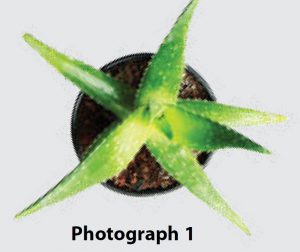Photograph 1 shows an Aloe vera plant in a pot.

(a) State two features that you can observe on the Aloe vera plant.
(b) From the features you stated in question 2(a), identify the type of this plant based on its habitat.
(c) Explain the adaptive features that enable Aloe vera plant to thrive in its habitat.
(d) If you live in a cold climate country, what is the action that you can take on the Aloe vera plant in Photograph 1 to ensure it survives?
Answer:
(a) Two features of Aloe vera plant: thorny and succulent
(b) Xerophytes.
(c) The thorns on the leaves protect the Aloe vera plant from becoming food to animals. Succulent leaves reduce water loss through evaporation to the environment.
(d) Bring the Aloe vera plant inside the house. This is because the roots of this plant rot easily when exposed to an abundance of water.
A hotel located near the beach intends to build a landscape with a combination of elements such as plants, structures and rocks. As a landscape architect, consider examples of plants which are suitable to be grown close to the beach and justify the selection of the plants.
Answer:
Ru, jelutong and coconuts. This is because the needle-shaped and pointed scales leaves can reduce wind resistance, thus prevent the trees from being uprooted when there is a strong wind. Needleshaped leaves can reduce extreme water loss due to exposure to high light intensity.